Q
Does 2025 D-Max use AdBlue?
From what we know so far, the 2025 Isuzu D-Max is expected to stick with its Euro 5-compliant diesel engine here in Malaysia. That means it'll almost certainly keep the AdBlue urea injection system to cut down on nitrogen oxide emissions—same tech approach as the current model. AdBlue works by squirting a urea solution into the exhaust system, and it's proven pretty effective at making diesel vehicles greener. Malaysia started rolling out stricter emissions standards back in 2020, which is why you're seeing more brands adopt this kind of tech on their diesel models.
For D-Max owners, the deal is you'll need to top up the AdBlue every now and then—usually somewhere between 5,000 to 10,000 kilometers. You can grab it at gas stations or auto parts stores, and it's not too pricey or complicated to use. Just a heads-up though: D-Max specs can vary a bit from market to market, so it's always a good idea to check with Isuzu Malaysia's official dealers for the exact details before you buy.
With global emissions regulations getting tighter all the time, AdBlue or similar exhaust treatment systems are basically becoming the norm for diesels. Taking the time to understand how it works and how to maintain it will definitely help you keep your truck in good shape.
Special Disclaimer: This content is published by users and does not represent the views or position of PCauto.
Related Q&A
Q
How many Litres of fuel does a D-Max take?
When it comes to the fuel tank capacity of the D-Max, the diesel variants of the Isuzu D-Max in the Malaysian market typically hold around 76 liters, though this can vary slightly depending on the specific model year and body type—like whether it's a single cab or double cab. For the exact figure, your best bet is to check your owner's manual or the label inside the fuel filler cap.
The D-Max is a pretty popular pickup here in Malaysia, and its fuel efficiency is definitely something to note. The diesel engine's strong low-end torque makes it great for hauling loads or long highway stretches. Planning your refueling stops smartly can really help with day-to-day usability.
One thing to keep in mind: the actual usable fuel volume might be a bit less than the stated capacity. That's totally normal—it's just the safety buffer built in to allow for fuel expansion. If you're someone who does regular off-roading or long-distance driving, especially in remote parts of East Malaysia, it pays to map out where the petrol stations are along your route. Oh, and don't forget to service your fuel filter regularly and drive sensibly—both go a long way in keeping those fuel consumption figures in check.
Q
What is the best hybrid vehicle for 2025?
The top contenders for Malaysia's best hybrid car in 2025 are likely to be the Toyota Corolla Cross Hybrid, Honda City RS e:HEV, and BYD Qin PLUS DM-i. These models are generating buzz thanks to their impressive fuel efficiency, proven hybrid tech, and ability to handle local road conditions like a champ. The Corolla Cross Hybrid is a hit with families, thanks to Toyota's reliable THS II hybrid system and strong resale value. On the flip side, the Honda City RS e:HEV is turning heads among younger drivers with its sportier drive and the efficient punch of the i-MMD system. For budget-conscious buyers, the BYD Qin PLUS DM-i is hard to ignore, offering longer all-electric range and a more competitive price tag. When shopping for a hybrid in Malaysia, folks should also think about how easy it is to get after-sales service, what the battery warranty covers, and how accessible charging facilities are. Sure, hybrids don't need to be plugged in, but good after-sales support can really cut down on long-term running costs. And let's not forget the government's tax incentives for hybrids – that's a big one too. Weighing all these factors together is the way to go to find the perfect fit.
Q
Will the 2025 D-Max have a hybrid version?
Isuzu hasn't officially spilled the beans yet on whether the 2025 D-Max will get a hybrid makeover. But let's be real, with the global auto industry shifting hard towards new energy and Southeast Asia's growing hunger for fuel-sipping rides, it wouldn't be a total shock if the D-Max gets some electric assist down the line. Isuzu's been toying with mild hybrid systems in certain markets lately, right? And the D-Max is their bread-and-butter pickup. Slapping a hybrid setup in there could seriously boost fuel economy without watering down its legendary hauling and off-road grit – a big deal for Malaysian buyers who want both utility and to keep an eye on those fluctuating pump prices.
Now, hybrids come in flavors: mild (MHEV) and full (HEV). Mild hybrids use a 48V battery to help with start-stop and recapture some energy, which helps nudge fuel economy up a bit. Full hybrids can actually potter around on electric alone for short distances. If the D-Max goes hybrid, my bet is we'll see it first on the higher-spec trims.
Plus, the Malaysian government's been throwing tax breaks at energy-efficient cars lately, which could grease the wheels for a hybrid D-Max to roll in. If you're keen, keep your eyes peeled on Isuzu Malaysia's official site or hit up the local motor shows – that's where the latest deets are likely to drop.
Q
How much is an Isuzu D-MAX 2025?
The 2025 Isuzu D-MAX is expected to have a range of prices in Malaysia depending on trim levels and specifications. Looking at the current model's pricing as a guide, the base variant will likely start around RM90,000, while the top-spec version – possibly featuring the 3.0-liter diesel engine – could nudge closer to RM140,000. Of course, we’ll have to wait for Isuzu Malaysia’s official announcement for the exact figures.
The D-MAX has long been a favorite pickup here, known for its tough-as-nails durability, impressive payload capacity, and solid off-road chops – perfect for Malaysia’s diverse landscapes and hardworking commercial needs. The 2025 model is expected to carry forward that practical design philosophy but might get some nice upgrades, especially in the tech department. Think possibly a 360-degree camera system or more advanced active safety features to keep things modern.
And let’s not forget Isuzu’s diesel engine tech – it’s always been praised for good fuel efficiency and that healthy torque punch, which makes it ideal for long hauls or when you need to haul heavy loads. If you’re thinking about getting one, keep an eye out for official promotions – things like tax exemptions or attractive financing deals could sweeten the pot. It’s also worth cross-shopping with segment rivals like the Toyota Hilux or Mitsubishi Triton to make sure you’re getting the spec that best fits your needs.
Q
How much horsepower does a Isuzu D-Max 2025 have?
The 2025 Isuzu D-Max's engine options for the Malaysian market stay true to the brand's focus on durability and practicality. Horsepower figures vary by configuration, with the mainstream 1.9-liter turbo-diesel cranking out around 150 hp, while the more powerful 3.0-liter turbo-diesel ups the ante to approximately 190 hp. Both pair with either a 6-speed manual or automatic gearbox, balancing everyday driving with off-road capability.
What really stands out with the D-Max lineup is its diesel expertise—strong low-end torque. The 3.0-liter, for example, punches out a meaty 450 Nm of peak torque between 1,800-2,800 rpm, which is perfect for Malaysia’s varied terrain and hauling needs. If fuel efficiency is your priority, the 1.9-liter makes more sense, returning around 6.5 liters per 100 km under the NEDC cycle.
Also, expect the 2025 model to carry over Isuzu’s smart 4x4 system with a rear differential lock and a solid 3.5-ton towing capacity—features that keep it competitive in the pickup segment. If you’re regularly hitting the open road or need to move heavy loads, swing by an authorized dealer for a test drive. The chassis tuning and payload feel are best experienced firsthand, since real-world driving impressions can vary based on how you’ll actually use the truck.
Q
How long is the D-Max 2025?
The 2025 Isuzu D-Max comes in slightly different lengths depending on the variant. The single cab standard model is around 5,265mm, while the double cab stretches a bit longer at approximately 5,300mm. Exact dimensions might vary slightly based on rear bumper design or optional extras like a tow hitch. This pickup is pretty popular here in Malaysia, and it's easy to see why – its generous cargo space and off-road chops make it a solid fit for our diverse local needs, whether that's hauling gear for the farm or gearing up for an outdoor adventure. The 2025 D-Max keeps Isuzu's reputation for toughness alive, packing an efficient diesel engine, a capable 4x4 system, and a body built with high-tensile steel to boost safety. For Malaysian buyers, when picking a pickup, it's not just about length. You've also got to think about the wheelbase – usually over 3,000mm – which affects how it handles different roads, and whether the payload capacity (around 1 tonne) fits your daily use. You can get a better feel for all these details during a test drive.
Q
What colors are the Isuzu D-Max 2025?
The 2025 Isuzu D-Max hits Malaysian showrooms with a sharp and practical range of exterior colors to suit all tastes. You've got your classic Glacier White, sleek Onyx Black, modern Titanium Silver, bold Ruby Red, and a refreshing Ocean Blue – all on-trend hues that don't just look good, they're built to handle Malaysia's climate too. Think easy-to-clean finishes and UV resistance that's been put through its paces for our local conditions.
Picking the right color? It's not just about what catches your eye. Lighter shades definitely make a difference in the heat, keeping the cabin cooler, while darker tones add that touch of sophistication and gravitas. That's the thing with the D-Max – it's a workhorse that doesn't skip style. Whether you need to project a professional image for business or want something that reflects your personal vibe for family drives, there's a color in the lineup that fits.
And hey, to keep that paint job looking factory-fresh, regular washes and a good wax are non-negotiable, especially with our frequent rain. A quality carnauba wax will work wonders in preserving that shine and protecting the finish from the elements.
Q
What is the fuel consumption of the Isuzu Dmax 2025?
The 2025 Isuzu D-MAX delivers impressive fuel economy, though exact figures vary slightly by trim and drivetrain. The 1.9-liter turbo-diesel engine returns a combined fuel consumption of approximately 6.5 liters per 100 kilometers, while the 3.0-liter turbo-diesel variant comes in at around 7.2 liters per 100 kilometers. Keep in mind, real-world mileage can fluctuate based on driving habits, road conditions, and payload.
Under the hood, this pickup leverages Isuzu's advanced Blue Power diesel technology, which not only boosts fuel efficiency but also cuts down on emissions—perfect for Malaysian drivers who want both strong performance and wallet-friendly running costs. What's more, with a fuel tank capacity of about 76 liters, the D-MAX offers excellent long-distance range when paired with its efficient engines.
For folks who regularly haul cargo or hit the trails, the D-MAX's fuel economy stands out in its class. Add to that Isuzu's reputation for durability and low maintenance costs—two factors Malaysian buyers truly value—and you've got a compelling package. As always, we recommend picking the engine that best fits your usage needs and staying on top of regular maintenance to keep that fuel efficiency in top shape.
Q
What is the top speed of the Isuzu Dmax 2025?
The 2025 Isuzu D-Max maxes out at around 190 km/h, a figure that really highlights the punch from its 3.0-liter turbocharged diesel engine. We're looking at roughly 190 horsepower and a meaty 450 Nm of torque here, paired with either a 6-speed auto or manual gearbox—so it's got that nice balance of highway stability and off-road grit. For folks in Malaysia, the D-Max's chassis setup and 4x4 system make short work of our diverse local roads, whether you're stuck in city traffic or bombing down a muddy backroad. What's also worth shouting about is its fuel economy, which gets pretty impressive on long drives. Throw in advanced safety kit like adaptive cruise control and lane keep assist, and it's even more solid for those highway stints. If you're after a pickup that nails the practicality vs performance sweet spot, the D-Max is definitely one to have on your radar. Do yourself a favor and hit up your local dealer for a test drive to really feel what it's capable of.
Q
How much is 2025 Isuzu D-Max?
Pricing for the 2025 Isuzu D-Max in Malaysia is expected to vary depending on the trim level and specifications. Looking at the current model's price range as a guide, the base variant could start around RM90,000 to RM100,000, while the fully-loaded or high-performance versions might push up to RM140,000 to RM150,000. Of course, we’ll have to wait for the official release to confirm the exact figures.
The D-Max has always been known for its rugged durability and off-road capabilities. It’s packing an efficient diesel engine and offers 4WD, which makes it a solid fit for Malaysia’s diverse road conditions – from city streets to those weekend adventure trails. The new model is likely to get a tech upgrade too, possibly with more advanced safety systems and snazzier infotainment features.
For potential buyers, beyond just the sticker price, it’s worth considering Isuzu’s after-sales service network and the truck’s resale value. These factors play a big role in the long-term ownership experience. If you’re keen, keep an eye on Isuzu Malaysia’s official announcements or swing by your local dealership for the latest info to help you make a smart buying call.
Latest Q&A
Q
What is the CC of Honda City 2020?
The 2020 Honda City hits the Malaysian market with two engine choices: a 1.5-liter SOHC i-VTEC naturally aspirated petrol engine and a 1.5-liter DOHC i-VTEC hybrid system. Let's break down the specs. The petrol unit displaces 1497cc, cranking out 121 horsepower and 145 Nm of torque. On the hybrid side, it pairs that same 1.5-liter engine with an electric motor, resulting in a combined 109 horsepower – this one's all about fuel sipping efficiency.
Now, CC (cubic centimeters) is the measure of engine displacement, and it directly impacts how a car performs and drinks fuel. Typically, a bigger displacement means more power, but it can also mean higher fuel bills. The City's 1.5-liter sweet spot is a big reason it's so popular in Malaysia – it strikes that perfect balance between pep and fuel economy, handling both city commutes and longer drives like a champ.
But the 2020 City isn't just about the engine bay. It also comes loaded with Honda Sensing safety tech and a modern, fresh interior design, which really ups its game in the market. For Malaysian buyers, this car ticks all the boxes: practical, easy on the wallet at the pump, and packed with the latest tech. It's a solid all-rounder.
Q
How much does a Honda 2020 cost?
Prices for the 2020 Honda models in Malaysia vary quite a bit depending on the specific model and how it's kitted out. Take the Honda City, for example – you're looking at roughly RM70,000 to RM90,000. The Civic sits a bit higher, usually ranging from around RM110,000 up to RM140,000, while the CR-V typically falls between RM140,000 and RM170,000. exact figures hinge on the trim level, engine specs, and any extra add-ons you might go for.
When buying a new car in Malaysia, it's not just the sticker price you need to factor in. There's registration fees, insurance, road tax – all that extra stuff adds up and affects the final on-the-road cost.
Over in the used car market, 2020 Honda models will fluctuate in price too, based on mileage, condition, and remaining warranty. You can generally pick one up for 20% to 40% less than a brand-new equivalent.
If you're in the market, I'd definitely recommend shopping around different dealers to compare quotes. It's also worth checking out any ongoing Honda promotions or financing deals – those can really help you save some cash.
Hondas have a solid rep in Malaysia for being reliable and fuel-efficient, especially popular models like the City and Civic. They're pretty affordable to own long-term, and getting them serviced or repaired is relatively straightforward.
Q
What is the top speed of Honda City 2020?
The 2020 Honda City maxes out at around 190 km/h, which is the top speed you can squeeze out of its 1.5-liter i-VTEC naturally aspirated engine under ideal conditions. Of course, in the real world, you might see a slight difference depending on road conditions, how much you're carrying, or the weather. This car is pretty popular in the Malaysian market, and it's not just because of its solid performance—it's also about that fuel efficiency and nimble handling that makes city driving a breeze. The CVT gearbox in the City does a good job smoothing out power delivery, so acceleration feels seamless and efficient, whether you're commuting daily or hitting the highway for a longer drive. For Malaysian buyers, beyond just top speed, overall performance and maintenance costs matter a lot, and the City delivers here too. Its low trouble rate and wide service network make life easier for owners. If you're craving a bit more zip, there's always the Honda City RS variant. It gets some tweaks to the engine tuning and sportier bits, but don't expect a huge jump in top speed—these cars are all about balancing practicality with a bit of driving fun, after all.
Q
How safe is the Honda City 2020?
The 2020 Honda City holds its own when it comes to safety, packing in 6 airbags, Vehicle Stability Assist (VSA), Anti-lock Braking System (ABS), and Electronic Brake-force Distribution (EBD). That's a pretty solid setup for the class, and it should do a good job of keeping you protected during those daily drives around Malaysia. Honda's ACE Body Structure is also on board here, which is designed to effectively disperse crash energy and boost occupant safety in the event of a collision. It's worth highlighting that the 2020 City scored a 5-star rating in ASEAN NCAP crash tests, which is a solid stamp of approval for its safety credentials. For Malaysian buyers, picking this car means you're not just getting Honda's usual reputation for reliability, but also a decent level of safety kit. If safety is a top priority for you, it's definitely worth checking out the specific safety features when you're looking to buy – things like whether it comes with Honda Sensing. That suite includes handy advanced features like Adaptive Cruise Control and Lane Keeping Assist, which can go a long way in making your drives even safer.
Q
What is the fuel economy of the Honda City 2020?
The 2020 Honda City demonstrates excellent fuel efficiency in the Malaysian market. The variant equipped with the 1.5L i-VTEC petrol engine and CVT transmission has an official combined fuel consumption of 5.4 L/100km (approximately 18.5 km/L). The hybrid e:HEV variant is designed for even higher efficiency, though its specific fuel consumption figure should be verified with official sources or latest reviews, as the widely cited 3.4 L/100km (approximately 29.4 km/L) lacks direct support in the provided search results and may not reflect real-world conditions in Malaysia. Both powertrains closely align with the demands of Malaysian consumers who prioritize fuel economy. Actual fuel consumption may vary depending on factors such as driving habits, road conditions, and vehicle load. Therefore, adhering to a regular maintenance schedule is crucial for maintaining optimal fuel efficiency.
Given Malaysia's hot and humid climate, judicious use of the air conditioning system and maintaining the recommended tire pressure can contribute significantly to improving fuel economy. As a top-selling model in the B-segment sedan market in Malaysia, the Honda City's fuel efficiency remains competitive against its peers, making it a practical choice for daily commuting and family use. The e:HEV hybrid version, in particular, presents a compelling option for environmentally conscious drivers seeking to minimize long-term running costs, pending verification of its specific fuel economy claims.
View MoreRelated News
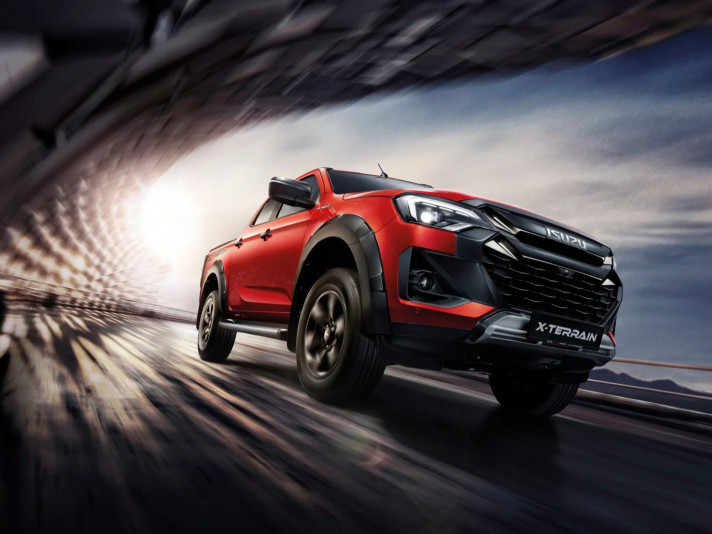
Isuzu D-Max continues to be one of Malaysia's best-selling pickup trucks, selling 3,081 units in the first half of the year
AshleyJul 30, 2025

Reviewing the Isuzu D-MAX: Does Its Splendid Design Match Its Off-Road Capability?
RobertApr 16, 2025
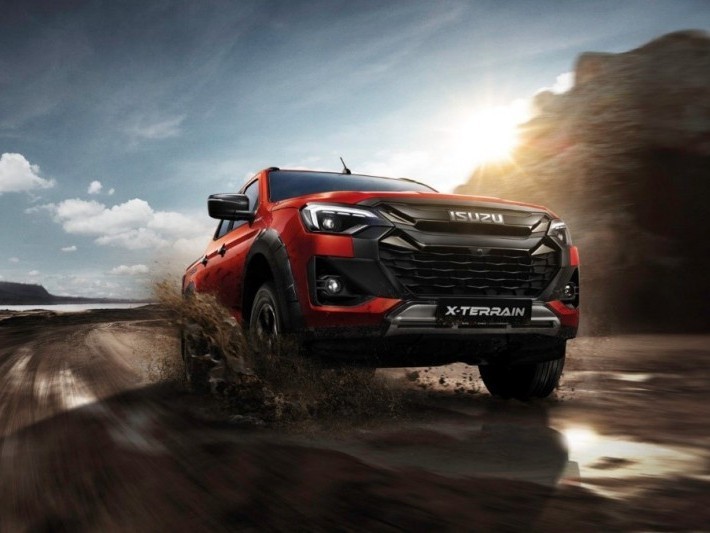
Isuzu D-MAX third generation model, seven options: market share 16.6%!
JamesSep 13, 2024
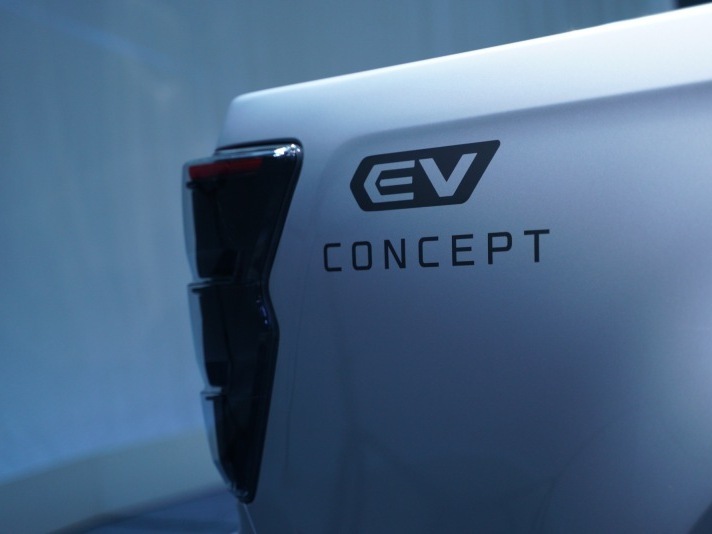
Reasons Why Pickups and SUVs Are Not Suitable for Electric Drive, Industry Secrets You Must Know Before Buying
JamesFeb 14, 2025

Isuzu launches the all-new MAXFORCE engine, more powerful!
AshleyNov 15, 2024
View More








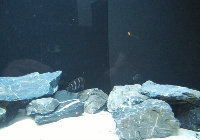



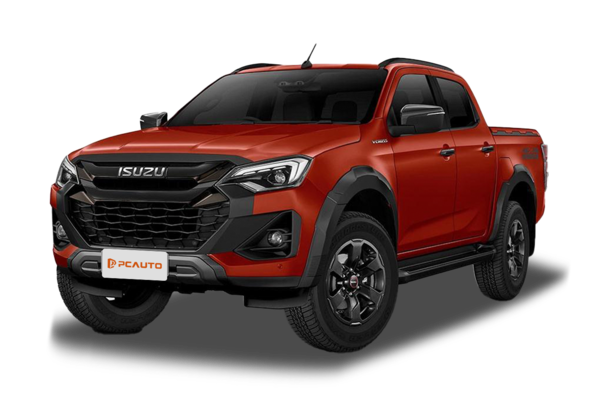





Pros
Cons